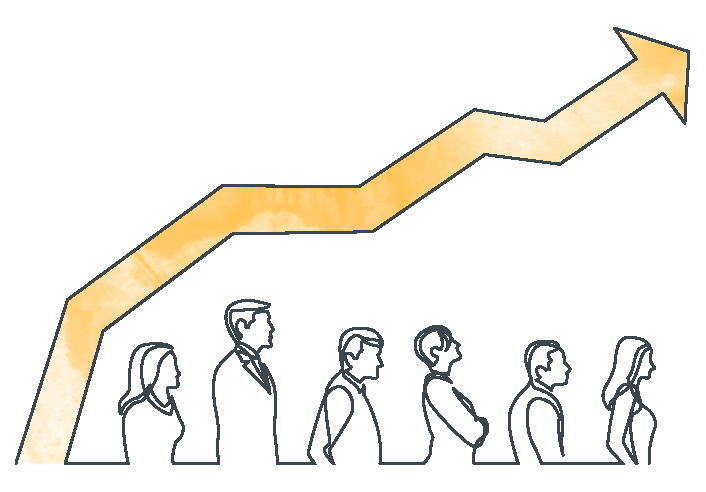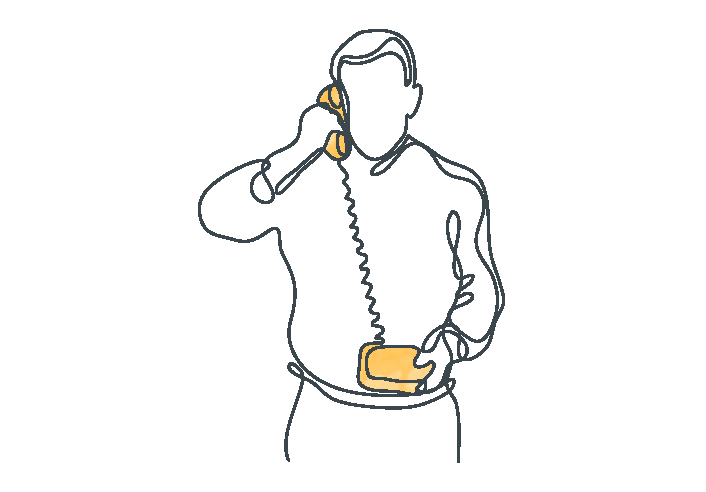Benefits of Fatigue Management
Tackling fatigue and poor sleep leads to a virtuous circle which will show on your bottom line.
Healthier, happier and well-rested employees are less likely to be absent through illness and are less inclined towards presenteeism. They have greater clarity of thought, improved communication skills and are more team-focused. Poor mental health, poor sleep and fatigue are common companions. By tackling fatigue you can improve mental health and reduce overall stress levels - the most common reason for long term ill health.
Every day of staff fatigue costs your company in lost productivity, higher accident rates and missed opportunities.

Productivity
Well-rested staff are more productive.
- are better able to manage workloads
- are more creative
- are more team focused
- are more productive.
Fatigued staff are less productive.
-
Sleeping for less than 5 hours a night can inhibit performance to the same extent as being legally drunk.
-
A study from Circadian technologies showed that regularly working 60+ hours a week leads to a performance decline of up to 25%.
Safety
Well-rested staff make fewer errors.
- make fewer errors
- take fewer risks.
Fatigued staff are a greater safety risk.
-
It has been shown that fatigued people are more likely to take risks (even in the battlefield).
-
The Exxon Valdeez, Challenger Space Shuttle, Chernobyl, Three Mile Island and Herald of Free Enterprise (to name a few) catastrophes were all attributable to human fatigue.
Absenteeism
Well-rested staff are less likely to be absent.
- are less susceptible to illness
- have better long-term health
- are less prone to stress.
Fatigued staff are more susceptible to ill health.
-
Poor quality sleep has been scientifically documented to increase the risk of obesity, diabetes, and heart disease.
-
Fatigue also reduces the body’s immune system meaning staff are more susceptible to common illnesses such as colds and flu.
-
Stress and fatigue are common companions.
Presenteeism
Well-rested staff achieve more during the day.
- are more proactive
- rarely report that fatigue interferes with their work
- suffer less from the circadian dip.
Fatigued staff achieve less during the day.
-
Fatigued staff are more likely to suffer from lower morale.
-
They also suffer more from the natural drowsy spell in the afternoon caused by our circadian rhythm.
-
They report that fatigue interferes with their work on a regular basis.
Work life balance
Well-rested staff lead a more balanced life.
- are able to make a full contribution in all aspects of life
- are happier
- are less stressed.
Fatigued staff struggle with responsibilities.
-
Fatigued people do not have the energy to make a full contribution to all aspects of their lives – leading to stress and feelings of resentment. They also suffer in their professional relationships and personal relationships.
-
Fatigued people become overwhelmed by their conflicting responsibilities.
Engagement
Well-rested staff are more engaged at work.
-
A good work life balance translates into better staff engagement.
Fatigued staff are less engaged at work.
-
Poor work life balance translates to low staff engagement. In turn this results in lower productivity, and increased absence.
-
Working relationships become compromised. Fatigued staff are less co-operative and team-orientated.
Communication
Well-rested staff communicate better.
-
Well rested people are better able to express themselves. They have better mental and verbal reasoning.
Fatigued staff suffer from poor communication.
-
It is proven that fatigue leads to a reduction in our vocabulary. Our communication becomes disjointed.
The bottom line
Well-rested staff contribute more.
-
Make stronger contributions at work
-
are less likely to be absent
-
are more productive – which has a strong positive effect on the bottom line.
Fatigued staff cost more.
-
Fatigued staff are more prone to absenteeism, presenteeism and reduced productivity – all of which have a negative impact on your bottom line.
CONTACT US
Find out how TPoH can help your company reduce fatigue and increase employee productivity.

